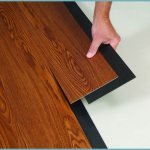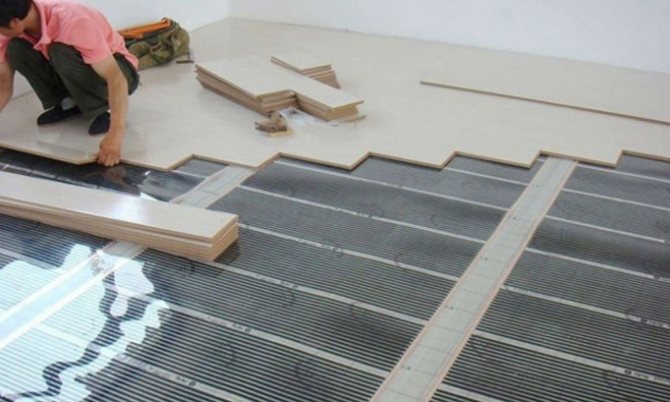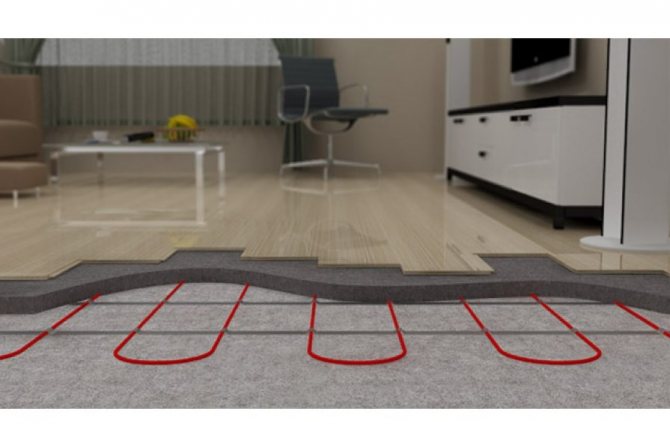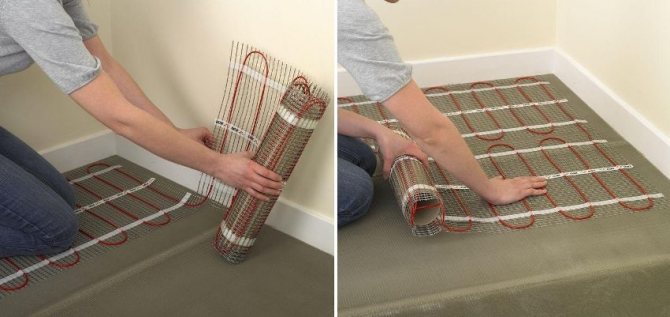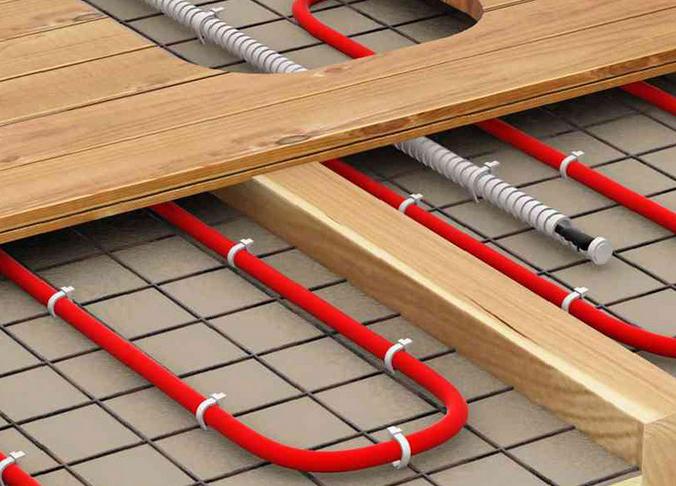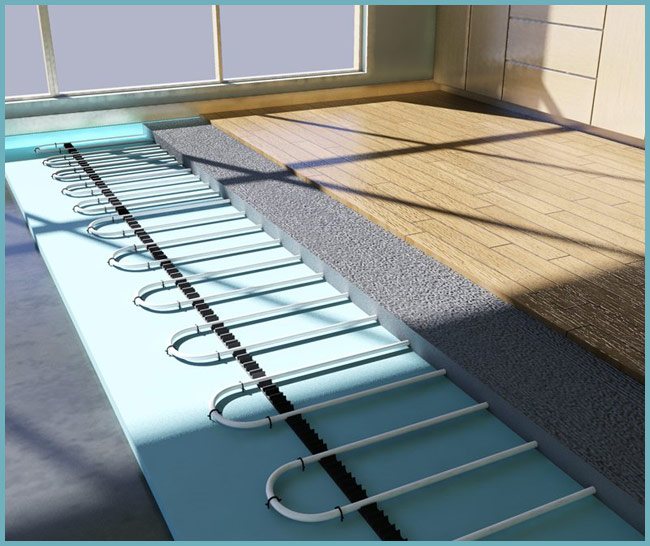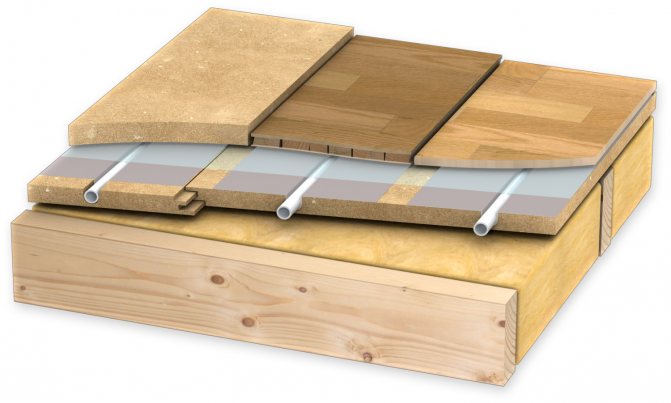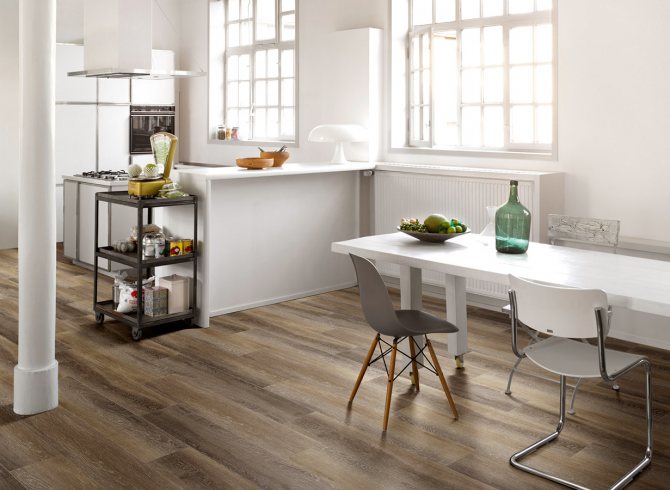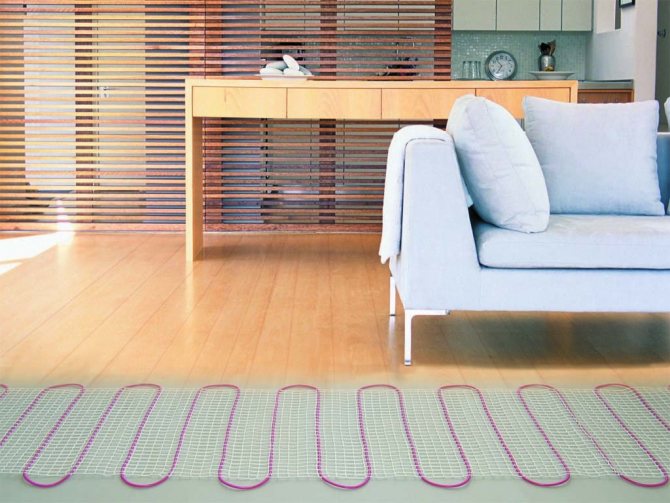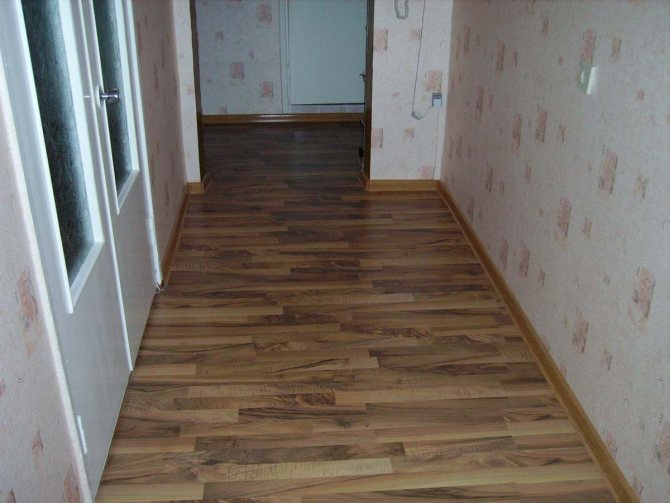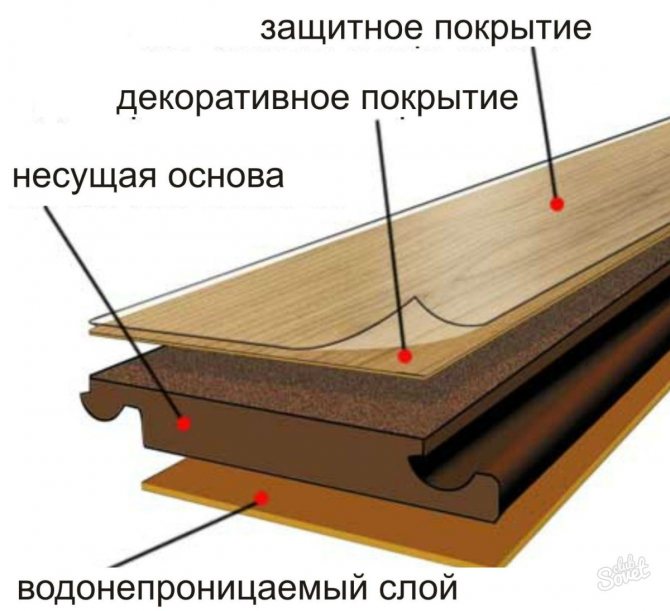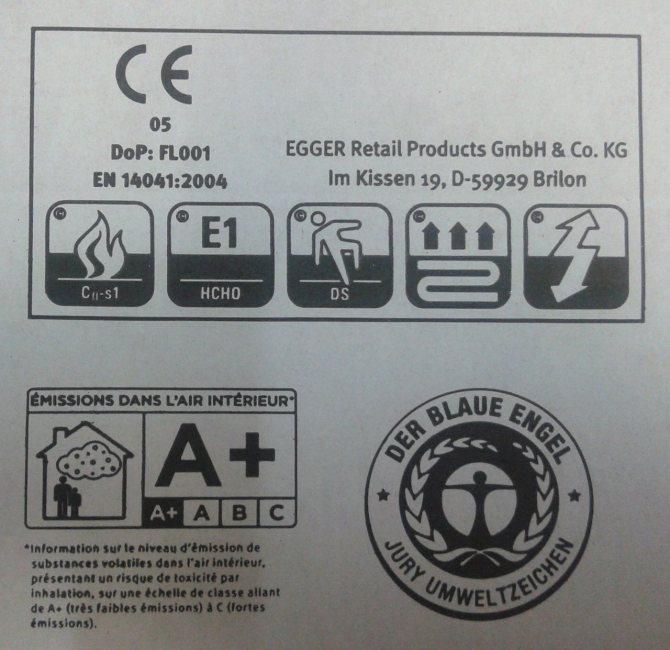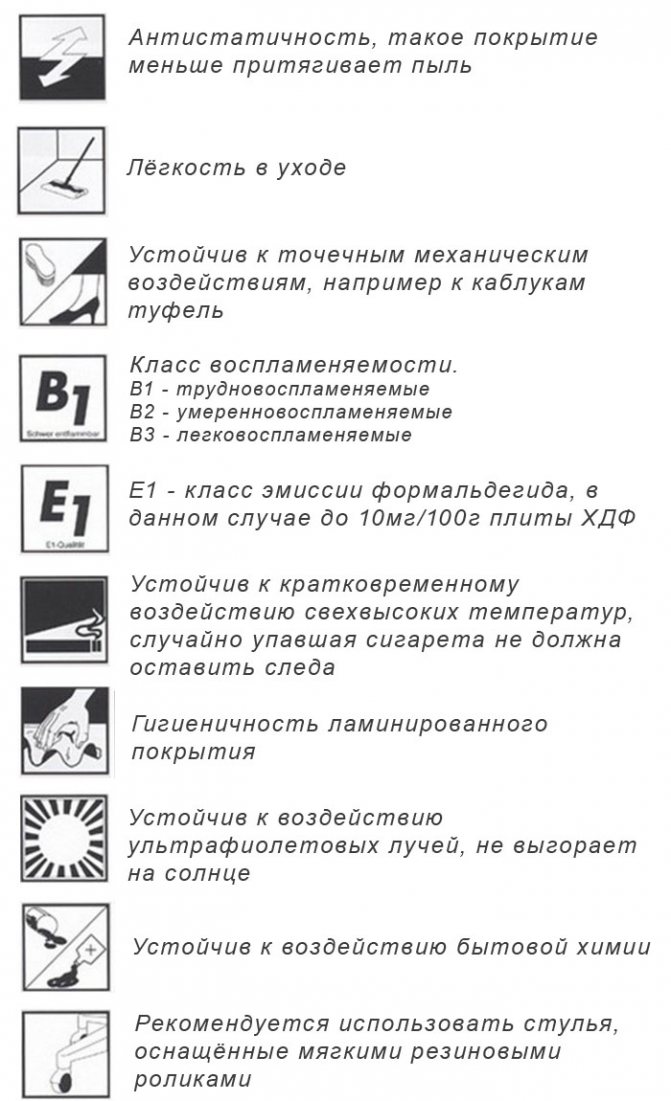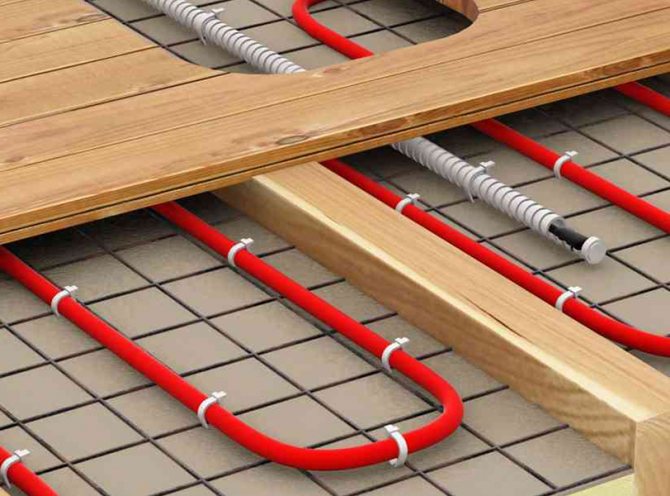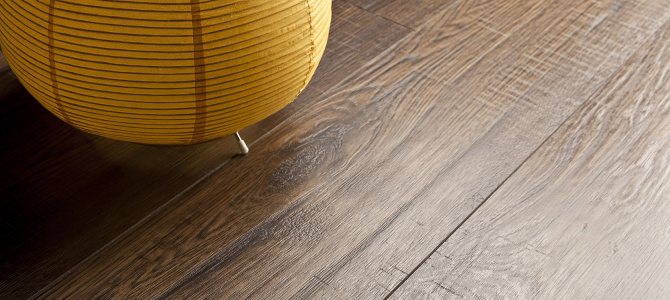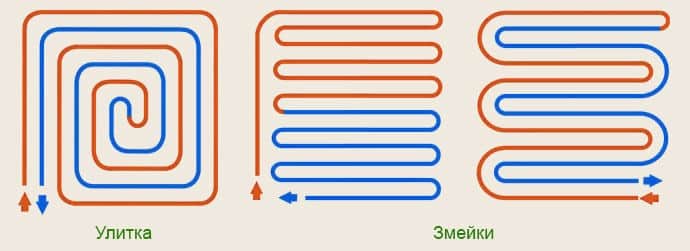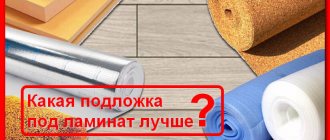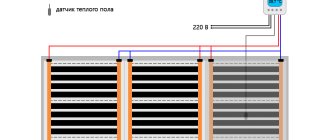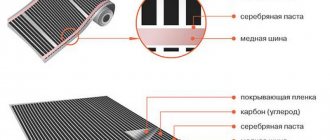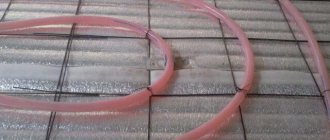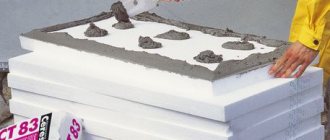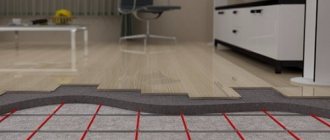Water or electric floor? Cable, film or infrared underfloor heating under a laminate on a concrete floor - which one to choose? A detailed description of all varieties and expert advice will help you choose the most practical option. In the last article, we learned how to lay the laminate on our own, now let's start heating it. Laminate, like ceramic tiles, is a cold coating, its front side is covered with a protective layer from scratches and other mechanical effects - resin, which stays cool even in the summer heat.
Laminate laying process
If you connect the so-called warm floor, its laminate surface will become much warmer even when walking with bare feet. But when buying, it is important to choose a system that will not lead to deformation, cracking and even drying out.
Attention! Before buying a laminate, you should study the labeling on the packaging: the thickness of the lamellas must be from 8 mm, there must be a compatibility icon for use in conjunction with a warm floor.
Varieties and features of use
To figure out which warm floor is ideal for the laminate, first you need to determine the principle of operation of each type.
- Water underfloor heating - grids of pipelines, inside of which a liquid is constantly circulating, heated to a certain temperature. The main advantage of the water system is the use of the heat carrier already available in the dwelling for heating the floor covering. As a rule, in operating risers of centralized heating, the temperature of the coolant is not high enough to properly heat the floors. Therefore, it is optimal to use the water system in private houses with an individual (autonomous) heating system.

Water heat-insulated floor - Electrical system - floor heating is carried out independently of the heating system, which is the main advantage of this type. Of the minuses, high energy consumption should be highlighted, but it can be significantly reduced by installing a programmable thermostat that will heat the floor according to the established schedule.
Since electric underfloor heating is most popular among consumers, manufacturing companies offer several of its varieties:
- cable;
- film;
- infrared.
The cable electric floor works using wire technology and is a ready-made mats that are glued to the base using tile adhesive. If the electric floor is laid under the laminate, then a thin layer of screed is poured and the floor covering itself is laid directly on the concrete floor.


Infrared warm film floor
If a resistive electric cable is used in conjunction with a so-called multi-zone thermostat, then individual sections of the floor in the same room can be heated at different temperature levels.
A feature of the film floor is the ultra-small thickness of the heating elements - up to 1 mm. This type of electric heating is ideal for laying under laminate and other similar coatings, moreover, it is more economical in comparison with the previous option.
The infrared floor works due to the infrared spectrum of solar radiation, which heats up the surrounding objects, which in turn release the received heat into the air. The system is characterized by the lowest energy consumption, especially when installing the thermostat under the laminate.


Scheme: infrared floor heating device
Combined material
A water-heated floor is laid in a concrete screed. Condensation may form on it.To prevent moisture from getting on the laminate, the screed is covered with thin polyethylene. Next, the substrate is laid. Manufacturers offer to use a combined material, which consists of polyethylene film and expanded polystyrene.
Another type of linoleum substrates is foil polystyrene foam. The foil will serve as a reflective screen. It promotes directed heat distribution to the floor surface.
Recommended: How to make underfloor heating from central heating?
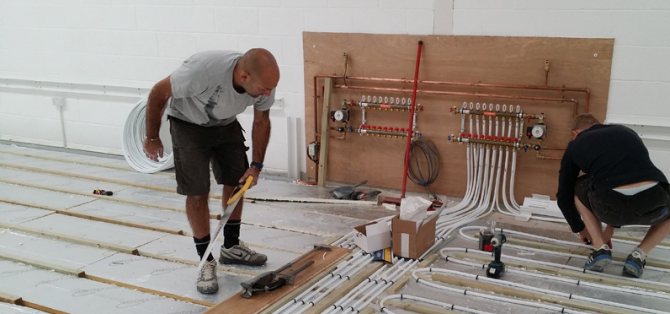

For a laminate that is laid on a water-heated floor, choose foil with lavsan fabric. It is recommended to place it on a rough surface in order to prevent heat loss associated with heating the foundation. In this case, the cladding underlay can be used without a reflective screen.
To keep the heat that flows from the water circuit to the floor surface, an insulating material must be used. For the laminate, choose a backing. The best coating is bitumen-cork, rubber-cork material, expanded polystyrene. Combined insulation based on expanded polystyrene is effective. It is not recommended to use laminate without a backing.
YouTube responded with an error: Access Not Configured. YouTube Data API has not been used in project 268921522881 before or it is disabled. Enable it by visiting https://console.developers.google.com/apis/api/youtube.googleapis.com/overview?project=268921522881 then retry. If you enabled this API recently, wait a few minutes for the action to propagate to our systems and retry.
- Similar posts
- How to make underfloor heating from central heating?
- Underfloor heating installation instructions
- How are pipes for underfloor heating carried out?
- Features of the system "combined heating: warm floor and radiators"
- How much does a warm floor cost?
- What is included in the Valtek underfloor heating kit?
Rationality of the device under the water floor laminate
The water system, subject to proper installation, will evenly warm up the entire base of the floor, and this, in turn, will extend the life of the entire laminate flooring. It is very important that the technology is followed: the concrete screed is poured only after assembling the system, as well as laying the pipes.
In this case, the screed must dry without fail! Then a substrate is laid on the concrete floor (completely dry), which will protect the coating from the influence of moisture. Laminate is laid on top of it.
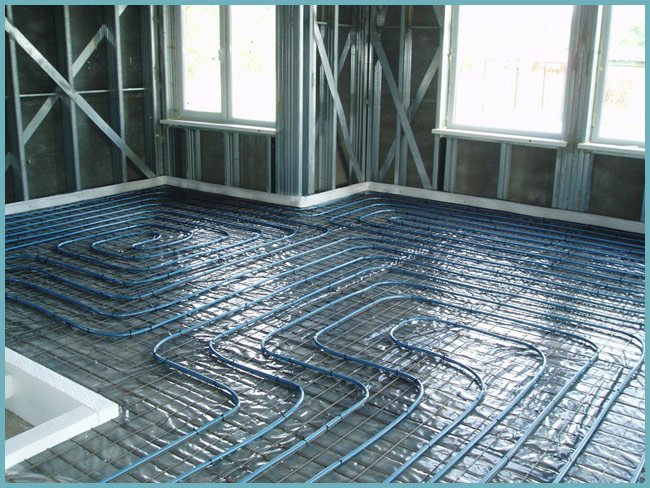

Installation of water floor Board. So that the screed dries quickly and moisture leaves the fresh concrete, you can connect the already assembled water floor, gradually increasing the temperature level.
Here is a calculator for the correct calculation of a warm, water floor
Why use a backing?
With a water heating system, a laminate with certain characteristics is chosen. It is more durable, but elastic at the same time. When heated, it expands, and when cooled, it restores its original shape without deforming or drying out.
The lamellas can withstand temperatures of 40 ° C well, despite the fact that the maximum floor temperature is no more than 25 ° C. They are resistant to moisture, but its amount must be minimized.
A backing is required under the laminate flooring. With water underfloor heating, its thickness should not be more than 3 mm. Why is an additional covering installed under the laminate?
- Laminate cladding is laid on a flat screed surface or self-leveling floor, but, unfortunately, it is not always possible to achieve an ideal coating. The underlayment is designed to soften small unevenness in the roughing base.
- The wooden flooring, laid on the concrete screed, squeaks strongly. An additional layer plays the role of sound insulation.
- Lamels are able to move; expand and contract. Experts say that the canvas can expand by 10 mm per season. This is due to temperature changes. In this case, a large load is placed on the connecting locks. They can become unusable. The underlay will reduce the stress on the locks.
- With underfloor heating equipment, condensation forms on the surface of the cladding. An additional protective layer protects the cladding from moisture.
We recommend: Is it possible to lay laminate flooring on a warm floor?
Laminate, like parquet, is a material that retains heat for a long time, so no additional thermal insulation is placed on the facing. The task of floor heating installers is to create a system that effectively heats the floor surface. With an additional heat-insulating layer, it will take a lot of energy to warm up the floor cloth, so they refuse to use the insulation.


The underfloor heating substrate should be thin and allow air to pass through well. Pay attention to moisture and high temperature resistance. Choose insulation that is inert to the chemicals of the concrete mortar or self-leveling floor mix. An important factor is the bactericidal properties of the material, so that fungus and mold do not form in it.
Natural and synthetic insulation is used as a protective layer for lamellas. Cork and pine needles are the most effective natural coatings. Of the synthetic ones, it is recommended to use polyethylene foam, expanded polystyrene, combined products. What is the most suitable underlay for additional protection of laminate flooring when underfloor heating?
Feasibility of electric floors for laminate
The cable system is mounted directly on a ready-made, already formed screed, on top of which, in turn, a substrate and laminate are laid. If the old one is in a deplorable state, it is usually dismantled, replaced with a high-quality insulated screed, under which a layer of insulation and a heat-reflecting screen are placed.
Here is a calculator for the correct calculation of eletropol
If there is no desire to dismantle the old coating, you can choose a film electric floor. The features of its design do not allow the laminate to deform or crack, and installation takes 2-3 hours, since the installation does not require pouring the screed or using glue.
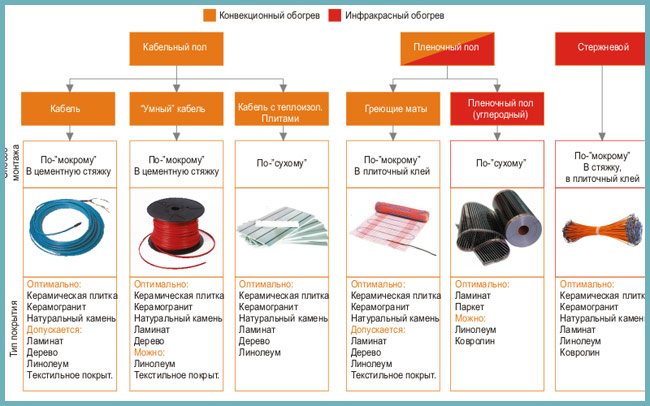

Scheme: types of underfloor heating
The foil system can be laid directly on the concrete floor and put into operation immediately after installation.
An infrared floor is considered the most gentle in terms of temperature conditions for a laminate - sharp temperature changes in temperature, which have a detrimental effect on the laminate, are excluded. Its installation is carried out quickly enough, without screed, without laying the substrate on the concrete floor or using an adhesive base.
Underfloor heating installation
If the process of choosing a laminate is completed, you should familiarize yourself with the features of its installation on a water floor. In general, the technology of its laying is no different from laying it directly on the screed. However, there are certain subtleties that must be taken into account when carrying out work.
Heating system equipment and preparatory work for laying laminate
How to install laminate flooring on a warm water floor? First you need to install the heating system and prepare the surface for laying the laminate. The work is performed in the following sequence:
- Determined with the area of laying heating pipes - they should not pass in places where heavy furniture will be installed. Open areas of use should be heated. If there are heating radiators in the room, do not lay underfloor heating in the immediate vicinity of them, otherwise, this area may overheat.
- If there is an old floor in the room, it is dismantled. The rough screed must have a difference of no more than 3 mm. Keep in mind that taking into account the laying of heating pipes, screeds and laminate flooring, the total floor height will rise significantly.
- If there are irregularities or a rough screed is needed, fill and level the floor. Experts recommend using expanded clay when pouring the surface. It keeps warm well.
- After drying, a waterproofing film and insulation are laid on the surface - it is best if it is foil-clad penofol.
- Before laying pipes, a reinforcing mesh is laid on the surface.
- Then proceed directly to the laying of pipes for heating.
- After all the contours are laid, connected, you are convinced that they are working properly, a damper tape is glued around the perimeter of the room - it will prevent cracks in the final floor pouring.
- At this stage, the final filling of the floor is carried out. For these purposes, cement mortar is used. The layer thickness is usually in the order of 5-7 centimeters.
- When the screed is dry, the entire surface is primed. The primer binds all small particles of dust, the surface itself, which prolongs the life of the floor covering.
- After complete drying, the surface is ready for laying the laminate.
Laying laminate
As you can see, the installation of a warm water floor requires certain skills, knowledge in the field of plumbing work. Often, the owners invite specialists in this field.
After the heating pipes are safely and efficiently hidden in the screed, you can proceed to the next important stage - laying the laminate on a warm water floor. This procedure is not so complicated, unlike the installation of a heating system, you can easily cope with it yourself.
To do this, you must adhere to the following recommendations and sequence:
- The first step is to create the desired climate in the room, turn on the heating system and warm up at maximum for 3 days. Turn off the heating and allow the correct microclimate to be established for several days.
- The next step is to adapt the laminate to the indoor climate. It must be brought into the house 3 days before installation, unpacked and given the opportunity to adapt.
- In the meantime, you can lay the underlay under the laminate.
- After the required time has elapsed, the laminate is started to be laid on the substrate. Moving from the wall, they begin to connect it with the help of lock joints, if necessary, cut the required length of the strips.
Important! All work on sawing the planks must be carried out in a separate room; dust must not enter under the floor covering.
- Please note that when laying the flooring, it is necessary to leave a gap against the wall. This will enable the laminate to move as it expands, as this is a natural and inevitable process. When laying the first row of covering, wedges of the correct size are inserted between the plank and the wall, which correspond to the recommended gap.
Important! Experts advise leaving a gap of 1-1.5 centimeters, depending on the thickness of the future plinth. The plinth should subsequently cover the gap.
- After covering the entire floor surface, the skirting boards can be installed.
At this stage, the process of installing a warm floor can be considered complete. If the work is done with high quality and in accordance with all the recommendations, the heating system should work properly. The point is small - it is enough to competently operate the laminate and the heating system, taking into account the coating used on it.
